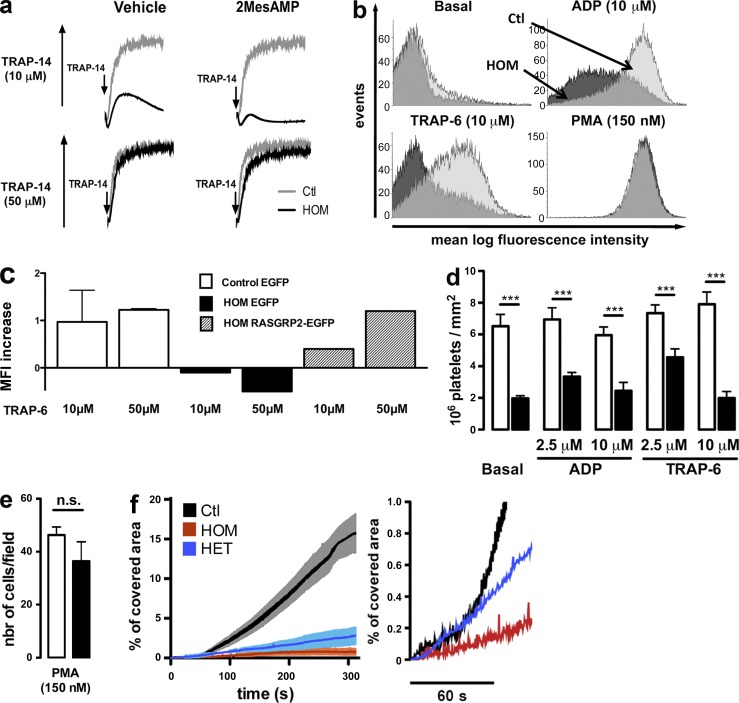Figure 5.
Evidence for CalDAG-GEFI bypassing pathways and defective platelet adhesion caused by the CalDAG-GEFI mutation. (a) Aggregation tracings from homozygous (HOM) and normal (Ctl) platelets with low- (top) or high-dose (bottom) TRAP-14 with or without the P2Y12 inhibitor 2MesAMP (100 µM). (b) FITC-labeled fibrinogen binding to platelets. Histograms are representative MFI of two independent experiments. (c) Alexa Fluor 647–labeled fibrinogen binding to megakaryocytes from a HOM patient and healthy controls (n = 2) transduced with RASGRP2-EGFP vector or EGFP vector control. On megakaryocytes, fibrinogen binding upon stimulation of cells in suspension by TRAP-6 (10 and 50 µM) was measured by flow cytometry. Results are expressed as MFI increase over the unstimulated state. (d) Static adhesion of platelets from homozygous (n = 2) and healthy (n = 6) subjects on fibrinogen (mean ± SEM 106 platelets/mm2; Student’s t test; ***, P < 0.001). (e) PMA-induced adhesion on fibrinogen of platelets from homozygous (filled bars; n = 1) and healthy (open bars; n = 4) subjects (mean ± SEM platelet per view field; Student’s t test). (f) Adhesion under flow (750 s−1) on collagen of calcein-AM–labeled platelets from a homozygous (HOM), a heterozygous (HET), or a healthy (Ctl) subject. Percentage of covered area was assessed over 300 s (left). The initial 60 s are magnified (right). Results are mean ± SEM; (n = 3 in each groups).

